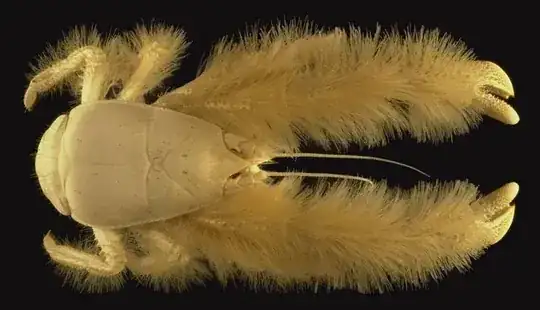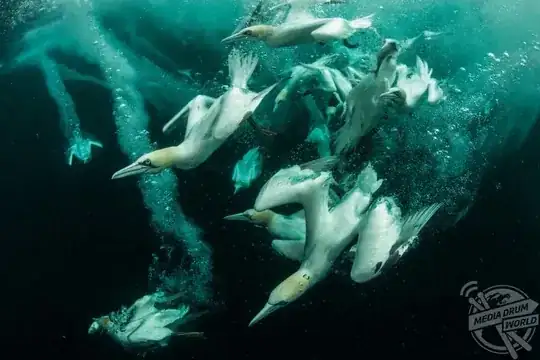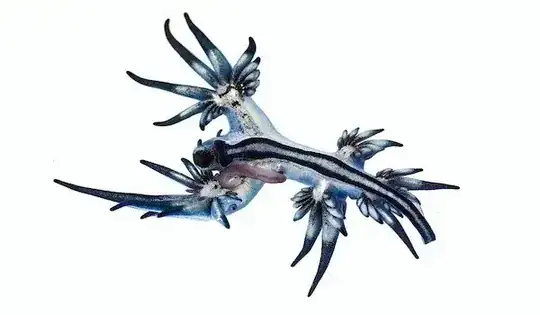It's a giant ray.
Roughly the wingspan of the length of a blue whale
Rays can be big. The giant oceanic manta ray has a 7 metre wingspan, and with sufficient food availability they could evolve to be very big. Perhaps they could crystallize their cartilage skeletons with some harder mineral like calcium phosphate, calcium carbonate, or chitin, for better support.
Snow-white
You could have seen an albino/leucistic individual. Or maybe it's so big that it fears no predators, and thus needs no camouflaging pigmentation, remaining plain white. If it spends much of its time in the deep, it wouldn't have much use for coloration anyway.
Typical shape and feathering of a bird of prey
What with their huge wings, rays certainly can have a wholly avian profile from above. As for the feathers, perhaps take inspiration from the yeti crab?

The ray's dermal denticles are long and filamentous, and amongst these filaments it grows bacterial cultures which it then eats, perhaps by means of some long fin-sweeping proboscis.
Gliding into the depth, probably in the mesopelagic/twilight zone
The depth doesn't really matter, most large whales change zone every now and then, with some of them diving well below the twilight zone despite living in the sunny layers.


